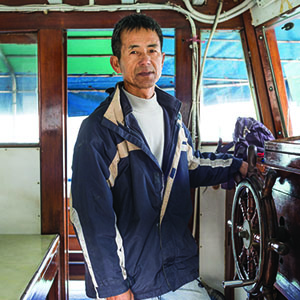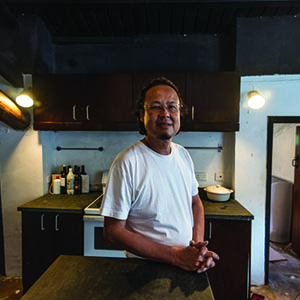This note was written after I attended a talk on the renovation of an old house in Kaohsiung’s once-prosperous district of Yancheng. The house was built in the early 1920s, when Taiwan was under Japanese rule. It was the shop, the workshop and the home of a family and their wedding dress business. With time, the house aged, and the district declined, but the family’s business is still alive and well up to this day. Though the family moved out of the house some time ago, they didn’t sell it. Later, a member of the family’s third generation who had grown up in Taipei moved back to Yancheng and decided to revive the house because he feels a strong emotional attachment to it. He then set out to work with a leading conservation architect, and spent two years and more than HK$3 million to restore life and vitality to the house. Today, the historic building is a hostel, a gallery and a venue for live cultural shows. It is a successful case of connecting the past to the present.
In contrast, the fate of a century-old green-brick house featured in this edition of Urban Diary is completely different. By the time you read this note, it’ll have been pulled down. The house owner Michael Wong Shu-kei decided to vacate the land for three new villas. The house, which sat inside Pak Tam Chung Country Park, was once the centre of a Hakka community whose ancestors had settled in Sai Kung as early as the 1830s. One of the halls in the house had for many years served as a public passage way that bridged the village community and the city beyond. This is a story about Michael – a Pak Tam Chung native – the demolished green-brick house, and the sorry state of heritage conservation in Hong Kong.
In a city that places short-term gain and quick profit over everything else, old houses are not the only category facing extinction. A small ferry service that had been humbly plying the waters between Sai Wan Ho and Tung Lung Island for 65 years folded just days before the Lunar New Year. Its owner Leung Tze-ho, a member of Hong Kong’s once-vibrant and important boat people population, blames unrealistic government regulations and intense business competition for the demise of his old business.
The historic green-brick house is gone, so is Mr Leung’s unsung ferry service. We use this edition to keep a written and photographic record of them for Hong Kong.
To ensure Hong Kong’s sustainability, concerted efforts are needed to address the values, the rules and the culture that are destroying our valuable past.




